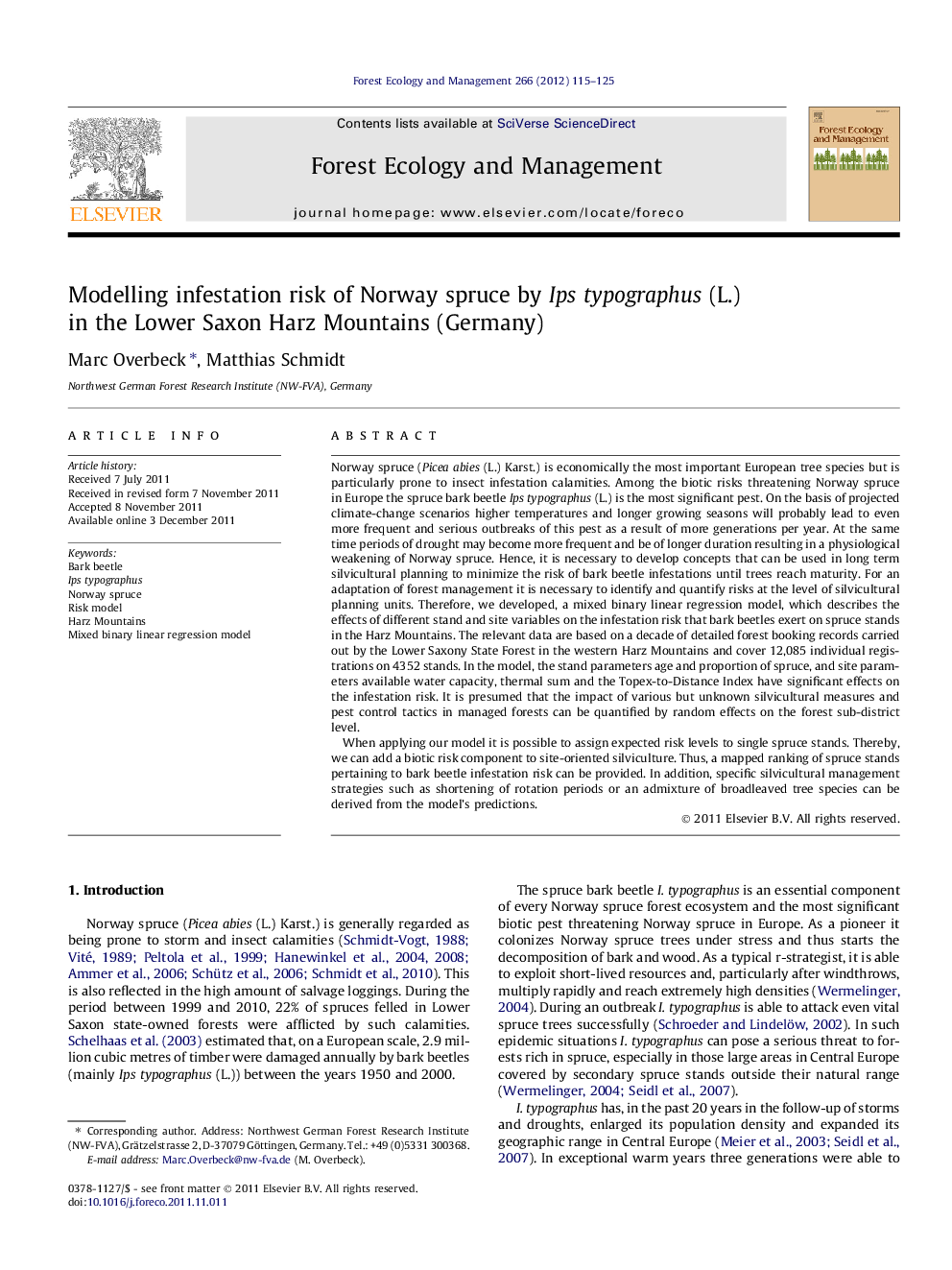| کد مقاله | کد نشریه | سال انتشار | مقاله انگلیسی | نسخه تمام متن |
|---|---|---|---|---|
| 87706 | 159263 | 2012 | 11 صفحه PDF | دانلود رایگان |

Norway spruce (Picea abies (L.) Karst.) is economically the most important European tree species but is particularly prone to insect infestation calamities. Among the biotic risks threatening Norway spruce in Europe the spruce bark beetle Ips typographus (L.) is the most significant pest. On the basis of projected climate-change scenarios higher temperatures and longer growing seasons will probably lead to even more frequent and serious outbreaks of this pest as a result of more generations per year. At the same time periods of drought may become more frequent and be of longer duration resulting in a physiological weakening of Norway spruce. Hence, it is necessary to develop concepts that can be used in long term silvicultural planning to minimize the risk of bark beetle infestations until trees reach maturity. For an adaptation of forest management it is necessary to identify and quantify risks at the level of silvicultural planning units. Therefore, we developed, a mixed binary linear regression model, which describes the effects of different stand and site variables on the infestation risk that bark beetles exert on spruce stands in the Harz Mountains. The relevant data are based on a decade of detailed forest booking records carried out by the Lower Saxony State Forest in the western Harz Mountains and cover 12,085 individual registrations on 4352 stands. In the model, the stand parameters age and proportion of spruce, and site parameters available water capacity, thermal sum and the Topex-to-Distance Index have significant effects on the infestation risk. It is presumed that the impact of various but unknown silvicultural measures and pest control tactics in managed forests can be quantified by random effects on the forest sub-district level.When applying our model it is possible to assign expected risk levels to single spruce stands. Thereby, we can add a biotic risk component to site-oriented silviculture. Thus, a mapped ranking of spruce stands pertaining to bark beetle infestation risk can be provided. In addition, specific silvicultural management strategies such as shortening of rotation periods or an admixture of broadleaved tree species can be derived from the model’s predictions.
► Risk model of infestation Norway spruce by Bark beetle.
► Stand and site sensitive mixed binary linear regression model.
► Age, spruce quota, water supply, temperature, Topex index have significant effects.
► Impact of human action in managed woods is quantified on account of random effects.
Journal: Forest Ecology and Management - Volume 266, 15 February 2012, Pages 115–125